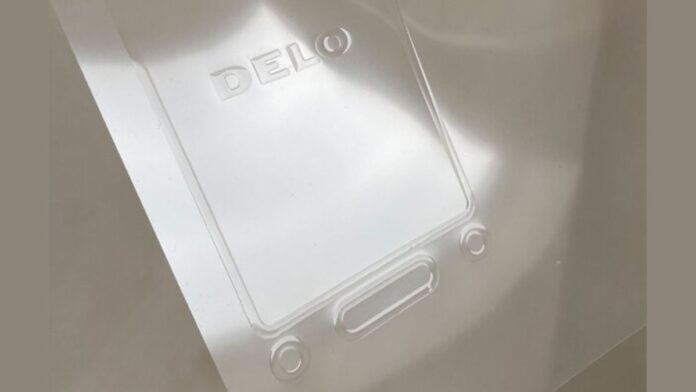The future is contactless and revolutionary!
Digital printing has clear advantages in the “adhesive printing” process
- Its non-contact printing process minimises the risk of damage to sensitive substrates
- Faster cycle and curing times thanks to UV light compared to other curing mechanisms (e.g. heat curing)
- The production process requires less space and significantly less energy
In Collaboration with DELO, the THIEME Technology Center has Carried out Initial Tests to Apply Special Adhesives using Digital Printing
Adhesive printing in digital printing! The first attempts in this direction were a complete success. Nothing is impossible – THIEME Knowledge. Yes, that’s right – The future is contactless and revolutionary!
Why is adhesive printing in digital printing so revolutionary? Normally, liquid adhesive is applied to the material to be printed, the substrate, using a squeegee in a screen printing process. In our test, we used a PET film as the substrate, to which the adhesive was applied using digital printing in a layer thickness of less than 50 µm.
New possibilities in fuel cell production – where exactly is non-contact digital printing needed? In collaboration with DELO, our Technology Center has carried out initial tests to apply special adhesives using digital printing.
DELO is a leading manufacturer of industrial adhesives based in Windach near Munich. DELO adhesives can be used for various applications within a fuel cell stack. For example, they enable the bonding and sealing of the two half-shells that make up a bipolar plate. They also ensure that the media circuits (hydrogen, oxygen, coolant) of the stack are reliably sealed to each other and to the outside.
Finally, the adhesives can also be used to fix components, such as the gas diffusion layer, within the stack assembly in order to ensure rapid further processing. The light-curing or pre-activatable adhesives and sealants are optimised for fast, precise and fully automated production.
It’s evident that we are just at the beginning of an exciting journey. Our initial results are promising and show that the application of adhesives using digital printing makes it possible to make a significant contribution to the more efficient manufacture of fuel cells.
With further research and development, this area will undoubtedly continue to grow and change the way we use and apply adhesives.












